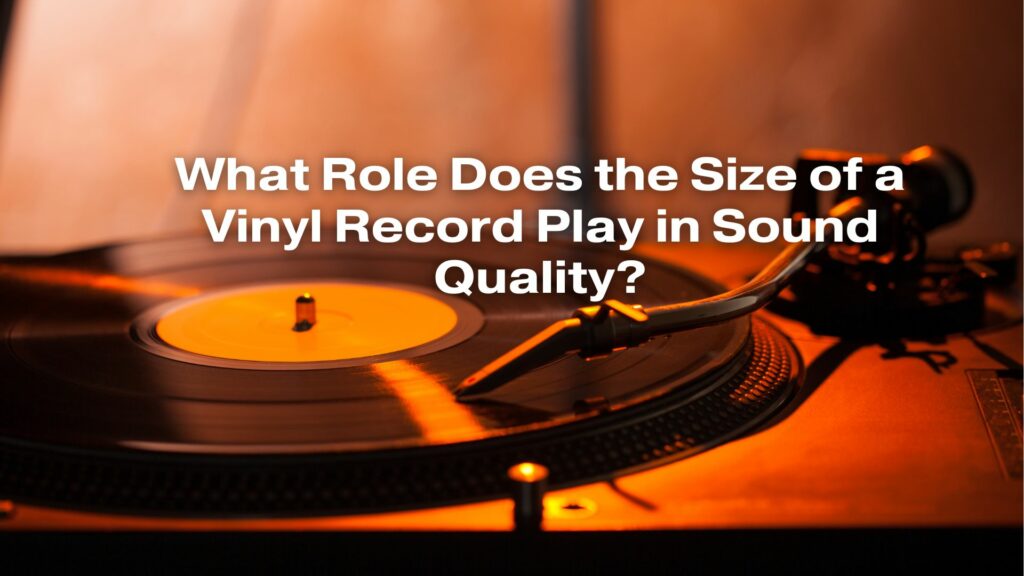Vinyl records have a timeless charm, known for their warm, analog sound. Vinyl enthusiasts often debate the importance of various factors affecting sound quality, and one element that frequently comes up for discussion is the size of the vinyl record. Does the size of a vinyl record significantly impact its sound quality? In this article, we will explore the relationship between vinyl record size and sound quality.
Vinyl Record Sizes:
Vinyl records come in various sizes, but the two most common sizes are 12-inch LPs (long plays) and 7-inch singles. Here’s a closer look at these two formats:
- 12-Inch LP (33 1/3 RPM): The standard album size for full-length releases, typically holding between 22 to 30 minutes of music on each side.
- 7-Inch Single (45 RPM): Smaller and often used for single tracks, accommodating about 4 to 5 minutes of music on each side.
Size and Sound Quality:
The size of a vinyl record does play a role in sound quality, but it’s not the sole determinant. Here are the key factors to consider:
- Groove Density: The groove on a vinyl record contains the analog audio signal. Larger records, like 12-inch LPs, have more surface area, allowing for less dense grooves. This means the grooves are more spaced out, which can result in less potential for inner-groove distortion and better tracking of high-frequency information.
- Inner-Groove Distortion: A known issue with vinyl records is inner-groove distortion, which occurs as the stylus reaches the innermost grooves. Larger records provide more room for the stylus to navigate this challenging section, potentially reducing distortion.
- Longer Playing Time: 12-inch LPs can accommodate longer playing times, allowing for a full album’s worth of music on a single side. While this is convenient, the grooves on these longer sides must be compressed to fit, which can impact sound quality due to reduced dynamic range.
- 7-Inch Singles: While 7-inch singles have smaller grooves, they also have shorter sides, which may result in less compression of the audio signal and potentially improved sound quality. However, the shorter playing time means they are not ideal for full albums.
- Stylus Quality and Turntable Setup: The quality of your turntable’s tonearm and cartridge, as well as proper setup, play a significant role in extracting the best sound from any vinyl record, regardless of its size.
- Vinyl Quality and Pressing: The quality of the vinyl material and the accuracy of the pressing process can affect sound quality. Premium materials and careful manufacturing result in less surface noise and a cleaner sound.
- Mastering and Production Quality: The mastering process and production quality are fundamental to sound quality. Well-mastered records, regardless of size, can sound excellent.
In summary, the size of a vinyl record does have an impact on sound quality, but it’s just one of many factors at play. A well-mastered, well-pressed, and properly maintained 7-inch single can offer exceptional sound quality. Similarly, a 12-inch LP can deliver a rich listening experience if it’s treated with care and played on a high-quality turntable.
Ultimately, sound quality is influenced by a combination of factors, and while the size of the vinyl record can be a consideration, it is far from the only element that matters. Vinyl enthusiasts often appreciate the unique qualities of both 12-inch LPs and 7-inch singles for their respective roles in enjoying music in an analog format.


